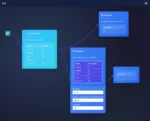
by tyler garrett | May 18, 2025 | Data Processing
In today’s dynamic data ecosystem, businesses and innovators are being driven towards rapid, iterative growth in their data pipelines. With more robust analytics platforms, continuous integration, and near real-time data processing, schema evolution emerges as a critical consideration. Schema evolution—the changes that occur over time to the structure of data—is not merely an inconvenience to developers, but a strategic opportunity to proactively manage data quality, leverage scalability, and unlock enhanced analytics capabilities. Effective schema evolution handling allows data pipelines to adapt gracefully, maintaining reliable insight generation even as data stores transform. As trusted technical strategists in consulting engagements covering the breadth of data, analytics, and innovation, we understand that strategically managing schema evolution can significantly impact your organization’s analytical maturity, competitive advantage, and decision-making agility.
Why Schema Evolution Matters in Data Pipelines
Data pipelines are the lifeblood of decision-driven organizations, providing the vital data streams necessary to power insights, tailor operations, and predict outcomes. One of the key challenges in maintaining effective and efficient data pipelines lies in the management of schema evolution. Schemas—structured definitions of incoming and stored data—tend to evolve naturally over time due to changing business requirements, expanding analytics needs, or updates in upstream data sources. As a result, a strategic approach to schema evolution handling is critical to ensure data integrity, accuracy, and reliability.
Organizations ignoring schema evolution run significant strategic and operational risks. Unanticipated schema changes can lead to pipeline failures, delayed analytics, and erroneous insights, costing enterprises precious time and resources. Furthermore, suboptimal handling of schema evolution can restrict scalability and limit innovation, severely hampering analytical potential. Therefore, proactively managing and embracing effective schema evolution strategies ensures pipelines remain robust, flexible, and prepared for future growth.
Businesses intent on harnessing advanced analytics consulting services need to place schema evolution handling front and center in their data management strategy. Solutions such as dynamic schema adaptation, intelligent alerting, and automated ETL processes contribute significantly to analytics maturity, ultimately driving smarter business decisions.
Best Practices for Efficient Schema Evolution Handling
Adopting a Schema Evolution Strategy
The first step in handling schema evolution effectively is establishing clear guidelines for schema management. Leaders advocating greater analytical agility must begin by developing comprehensive schema evolution strategies. Key principles of these strategies include anticipating future data needs, transparent communication between data teams and stakeholders, and establishing resilient workflows to deal with schema changes quickly.
One powerful approach involves versioning schemas explicitly and treating schema definitions as code. Schema specifications—much like software code—should be continuously tracked, validated with automated tests, and deployed systematically. Version control tools paired with schema registries and repositories make schema management transparent and straightforward, ensuring changes in data formats or structures do not catch teams off-guard. Keeping schema in line with organizational analytics frameworks drives accuracy and ensures stakeholders have ongoing confidence in their data insights.
Leveraging robust extract-transform-load strategies is crucial. Invest time in understanding the integral role of ETL solutions in data integration, and include schema consideration right from design and implementation stages. An effective ETL strategy mitigates schema change disruptions, ensuring your business consistently leverages meaningful insights in near real-time, despite evolving data sources.
Utilizing Tools and Automation
Smart use of specialized tools streamlines handling of schema evolution and enhances pipeline robustness. Schema registries and automated schema validation platforms proactively detect schema drifts and incompatibilities, alerting developers to schema issues before they become significant operational problems. This automation translates directly into reduced downtime, accelerated maintenance, and better resource allocation.
Additionally, providing your team with access to powerful data visualization applications—through installing industry-leading platforms like Tableau Desktop—enables faster debugging of schema evolution issues with ease, clarity, and precision. Intuitive visualizations offer instant validation and identification of discrepancies or relationships between different schema versions. Investing in visualization extracts maximum value from data environments, ensuring stakeholders remain aligned on evolving schema and analytics demands.
Employing scripting languages such as Python further enhances automation. Teams can leverage Python’s flexible libraries and frameworks for tasks such as data parsing, transformations, validation tests, or dynamic schema adjustments. Effective use of Python scripts for tasks such as web-scraping with dynamic schema requirements demonstrates how automation facilitates sustainable growth and innovation in data ecosystems.
Impacts of Schema Evolution on Data Analytics and How to Address Them
Maintaining Data Consistency and Integrity
A key benefit of adept schema evolution management is ensuring data consistency and integrity. Unplanned or unmanaged schema evolution often results in serious consequences, including data redundancy, aggregate retrieval inefficiencies, compromised data integrity, and even interrupted business workflows or analytical insights. By adopting clearly implemented schema strategies, businesses precisely anticipate pipeline behavior and uphold reliability of their analytical insights.
Appropriate usage of schema validation tools and automated testing frameworks ensures confidence in the consistent validity of your data models even through significant pipeline transformations. Modern analytics platforms and best practices—such as advanced Tableau consulting—support visibility into schema evolution implications, giving organizations control they need to maintain trust and regulatory compliance around data use.
Enhanced Scalability and Business Agility
Strategic schema evolution enables pipeline scalability and improved business agility. Organizations capable of adapting rapidly to evolving schemas reduce lead time turning data into actionable insights, helping businesses achieve competitive advantages.
Moreover, data engineering teams can implement techniques that enable fluid evolution of schemas, such as dynamic schema applications, no-schema databases or flexible schema storage. Organizations seeking guidance can benefit from reading our comprehensive guide – Data Engineering for Small Teams: Maximizing Impact. These efficient schema handling approaches promote rapid scaling and drive business agility. Leading businesses continuously develop schema evolution management methods and rapidly adapt to analytics needs, responding effectively to data opportunities as they arise.
Common Challenges and Recommendations
Despite clear benefits, schema evolution handling presents common challenges. Unauthorized schema modifications, insufficient communication between analytics and engineering teams, or inadequate schema change history inevitably restrict data pipeline robustness. Thorough managing and revoking privileges in access control can mitigate instances of unauthorized data or schema manipulation, reducing disruptive risk considerably.
Choosing appropriate tooling or platforms for schema evolution remains critical. Different pipelines and analytics needs demand unique schema handling. Understanding platform choices, such as comparing Mac vs Windows operating systems for optimized JavaScript handling, ensures your team uses appropriate environments, leading to smoother schema handling and better developer productivity.
At the management level, fostering robust communication channels between engineering and analytics stakeholders empowers timely identification, negotiation, and resolution of schema evolution needs. Transparent communication and regular alignment meetings assure cohesion across technical teams and better preparedness in managing changes.
Future-Proofing Your Data Pipelines
Ultimately, schema evolution handling involves adopting strategies that enable dynamic data pipeline adaptation. Organizations who maintain proactive schema evolution approaches undoubtedly grow stronger analytics capabilities and improved decision agility. Strategically leveraged schema management transforms potential disruption into innovation opportunities, enhancing pipeline resilience, data quality, and analytical maturity.
Proactively preparing data pipelines to manage schema evolution changes at scale is now a vital aspect of an organization’s competitive analytics strategy. By following schema evolution best practices, leveraging intelligent analytics and visualization platforms, and fostering robust communications across stakeholder groups, your organization positions itself on the cutting edge of data-driven innovation.
Schema evolution handling is more than avoiding pitfalls—it’s a strategic play for maximum analytical agility. Begin embracing schema evolution management today to propel analytics at your organization, guided by experienced tech strategists and expert consulting partners.

by tyler garrett | May 18, 2025 | Data Processing
In our increasingly data-driven landscape, transforming raw data into meaningful insights sits at the core of every successful business strategy. Yet, for decision-makers and technology strategists alike, the journey of data transformation is rarely a smooth ride. Errors and inconsistencies in data transformation workflows can become costly roadblocks, hindering productivity and impeding agile decision-making. Fortunately, today’s innovators have refined a robust toolkit of debugging techniques and advanced technologies to smooth that journey—turning debugging from painful necessity into strategic advantage. At Dev3lop, as seasoned specialists in Node.js consulting services, data analytics, and innovative solutions, we have distilled years of experience into actionable insights. Let’s dive deep into cutting-edge debugging methods and essential tools you can leverage immediately to streamline data transformation, enhance your data accuracy, and propel your business insights forward.
Understanding the Common Pitfalls in Data Transformation
Before mastering debugging, it is crucial to grasp common errors that inevitably emerge in data processing pipelines. Mistakes can occur at various stages—from source integration to transformation scripts and final visualization layers. Typical challenges include schema mismatches, format inconsistencies, duplicate entries, missing data, and performance bottlenecks, all of which can profoundly impact decision making outcomes. Without rigorous preventative or diagnostic measures in place, transformations can produce faulty insights that adversely influence strategic business moves. Proactively understanding these issues places your team ahead of the curve, ensuring data fidelity and reliability before any critical business decision.
Many businesses venturing into analytics begin with foundational steps such as basic data modeling. To explore foundational methodologies that can strengthen your initial analytics pipelines, Dev3lop’s recent publication, “A Beginner’s Guide to Data Modeling for Analytics”, offers strategic guidance. Ensuring precise data models early in your transformation pipeline significantly reduces debugging complexity later in the workflow. Furthermore, any overly complex transformation logic often tends to introduce hidden errors that may go unnoticed until visual outputs differ from expected results. Connecting clearly-designed dashboards, such as those outlined in Dev3lop’s recent Google Analytics Tableau dashboard, with your data streams can spotlight these inconsistencies from the outset.
Proven Debugging Techniques in Data Transformation
Systematic Incremental Testing
An approach we advocate heavily with our clients is incremental testing. By modularizing transformation workflows and systematically testing each stage, data quality can be validated step-by-step before reaching subsequent phases. This technique prevents small errors from compounding into large complexities downstream. Using incremental testing reduces overall debugging effort significantly while providing pinpointed transparency into problematic areas. It also integrates naturally into modern DevOps or DataOps practices, where continuous integration leverages a similar phased-testing approach.
Error Logging and Intelligent Alerting
Proactive error logging is critical. Sophisticated data transformation tools are now capable of comprehensive logging, capturing anomalies and sending instant notifications through intelligent alert systems. Using structured logging combined with AI-driven anomaly detection permits timely issue identification and rapid rectification, enhancing overall system health and confidence. Platforms such as Node.js frameworks, outlined extensively by our Node.js consulting services, enable effective monitoring, troubleshooting, and traceability within real-time data transformation pipelines. Furthermore, node applications, such as our article on exporting Twitter analytics described in “Send Twitter Data to Google BigQuery using Nodejs“, demonstrate practical error logging implementation in real-world analytics scenarios.
Essential Data Transformation Debugging Tools
Integrated Development Environments (IDEs)
Modern IDEs have vastly improved, providing comprehensive built-in debugging capabilities tailored specifically for data engineers. Features like breakpoint debugging, iterative variable inspection, and step-through execution allow precise identification of problematic transformation logic. Advanced IDEs also seamlessly integrate with popular version control systems, simplifying collaborative debugging and promoting team alignment during complex data transformation tasks.
Data Quality Monitoring and Profiling Tools
Quality monitoring applications monitor and proactively detect data inconsistencies at an early stage, helping teams maintain an ongoing culture of healthy data quality. Additionally, profiling tools offer data quality dashboards and automated diagnostics capabilities to instantly detect schema mismatches, abnormal data distributions, and pattern deviations. These specialized tools provide real-time visibility while significantly reducing debugging time and effort spent reviewing large datasets manually. By embracing data-first mindsets and data quality monitoring early, decision-makers can shift towards more strategic debugging approaches and pave the way for error-free analytics deployments.
Custom API Integrations
APIs play a pivotal role in data pipelines, often presenting integration complexities and potential error sources. Debugging is considerably simplified when pipelines utilize robust API-consulting frameworks. Dev3lop’s proven strategy, outlined comprehensively in “Driving Value in Quick API Consulting Engagements“, highlights valuable debugging efficiencies realized when APIs are leveraged effectively. Rigorous API testing, combined with clearly documented integration logic, drastically minimizes the challenges associated with debugging pipeline-level data transformation problems.
Emerging Technologies to Bolster Debugging Efficiency
AI and Machine Learning-Assisted Debugging
Artificial Intelligence and machine learning have entered the debugging toolkit to streamline complex analytics environments significantly. Leveraging intelligent analytics, anomaly detection, pattern recognition, and automatic resolution suggestions, ML-based debugging tools empower data teams to predict weaknesses before issues arise. To appreciate how AI becomes transformative in analytics teams, consider exploring “The Role of Data Engineers in the Age of AI“. This guide underscores the immense advantage that businesses gain by integrating AI-driven debugging workflows into routine analytics.
Quantum Computing and Advanced Debugging Capabilities
Quantum computing represents the futuristic horizon of data processing and debugging effectiveness. Quantum systems can process exponentially large datasets and accurately simulate potential transformation errors long before they manifest in conventional systems. While quantum readiness may sound distant, recent innovations showcased in Dev3lop’s article, “Five Revolutionary Applications Unleashing the Potential of Quantum Computing“, indicate businesses should prepare to strategically leverage quantum-inspired data-debugging methodologies sooner rather than later in their innovation journeys.
Automating Debugging Workflows for Better Business Outcomes
Workflow Automation and Task Schedulers
Manual debugging can be error-prone and highly inefficient, turning attention toward automation opportunities and task scheduling. The launch announcement for our new flagship software “Canopys Task Scheduler” highlights the power behind automating repetitive debugging checks and ongoing data validations, significantly improving your team’s overall productivity and efficiency. Through systematic automation, errors receive immediate attention, freeing analysts and decision-makers from tedious manual work and allowing focus towards impactful strategic initiatives and informed analytics-driven decisions.
Investing in Debugging Automation Strategies
Prioritizing automated debugging ultimately delivers considerable business value—fewer errors, higher accuracy, quicker analytics cycle times, and empowered decision-making. Decision-makers and technical strategists seeking to transform their analytics pipelines can immediately apply automation with strategic intent. If you’re looking to better navigate this evolving landscape, consider checking Dev3lop’s strategic guide “Break into the Data Industry: Your Essential Guide” and align your team for future-ready analytics debugging prowess.
Data transformation, once fraught with debugging challenges, swiftly becomes a strategic asset when complemented by proactive techniques, intelligent tools, and forward-thinking technology adoption. With intelligent debugging culture in place, robust data-driven decision making swiftly becomes your competitive advantage.

by tyler garrett | May 18, 2025 | Data Processing
Handling massive datasets collected over extended periods can quickly become overwhelming without a clear and strategic approach. In today’s rapidly evolving landscape, data-driven businesses are collecting historical data at an unprecedented rate, yet many struggle to really harness its transformative potential. Time-partitioned processing has emerged as a critical strategy to efficiently manage, analyze, and draw actionable insights from enormous volumes of historical data. Here, we guide you through the ins and outs of leveraging time-partitioned processing to streamline your analytics operations, improve data accuracy, enhance query speed, and generate greater business impact from historical databases.
What Exactly Is Time-Partitioned Processing?
Time-partitioned processing involves dividing historical data into smaller, discrete segments—most often based on timestamps, intervals, or dates—to simplify management and enhance analytical performance. This means that your datasets are partitioned by day, week, month, quarter, or any other logical and consistent time frame relevant to your business cycle. Organizing immense datasets through logically defined partitions significantly increases efficiency in data processing tasks, as operations no longer need to scan through rows irrelevant to the task at hand. Instead, they’re able to swiftly access targeted subsets of data.
Let’s imagine your enterprise generates billions of data points annually from marketing interactions, IoT devices, or analytics platforms like Google Analytics, Tableau, or even datasets extracted from TikTok metrics. Without proper partitioning, querying large-scale historical data becomes expensive in terms of storage, computation cost, and performance. Querying a non-partitioned historical database would force your analytics system to traverse unnecessary data segments, leading to excessive latency and increased bandwidth consumption.
Introducing a strategic time-partitioning methodology drastically mitigates these inefficiencies. Your analytics solutions, whether managed in cloud platforms like Google BigQuery or relational databases optimized through MySQL consulting services, perform significantly faster by targeting relevant historical data partitions, thereby reducing overall processing time and costs.
Enhancing Analytical Performance and Scalability
Analytics and processing speed limitations become serious barriers for businesses that scale and grow. Historical data queries are resource-intensive operations that can cause major bottlenecks when processing speed is reduced. By adopting a time-partitioned strategy, organizations drastically reduce the volume of data that sophisticated analytical tools have to consider at any given query. This targeted processing model not only cuts down processing times, but also maximizes database resource utilization by limiting resources to the required datasets only.
Moreover, choosing the right time segments ensures ultimate database performance. For instance, daily partitions might be appropriate for a real-time dashboard or fast-changing data scenarios, whereas quarterly segments could be sufficient for annual historical trending analyses. Learning how regularly to partition requires a strategic approach. Companies often collaborate with experienced data specialists who understand advanced strategies for optimizing large-scale data analyses. Investing effort in setting up robust solutions, like those explained in our strategy piece titled collecting and cleaning accurate and reliable data, ensures trustworthy analytical outputs that scale seamlessly.
To further elevate performance and scalability, consider techniques like thread-local storage optimizations (TLS optimization for parallel processing). TLS further accelerates data processing by ensuring concurrency and improving responsiveness in partitioned datasets.
Gaining Deeper Insights Through Targeted Historical Analytics
Historical data vividly illustrates patterns, cycles, and trends pivotal in shaping informed strategic decisions. Leveraging time-partitioned processing empowers analysts to swiftly drill into segments of past data to precisely determine cause-effect relationships, anomalies, and critical insights for future actions. Rather than analyzing entire databases in search of relevant insights, targeted partitioning facilitates more effective and efficient explorations of stored information.
For instance, organizations leveraging customer lifetime value (CLV) for optimizing their retention strategies typically depend on vast historical datasets. Insights gleaned from analyzing CLV can significantly improve investment strategies in customers identified as high retention targets. Our guide CLV analysis to optimize customer retention highlights the value of targeted analytics in enabling data-driven decisions and directing resources towards high-value customer segments.
By precisely analyzing specific time partitions during events, enterprises identify correlations quickly. Strategic partitioned data processing enables businesses to capitalize upon understanding peak periods of engagement, specialized buying behavior, and critical revenue inflows. Moreover, using powerful visualization tools, such as Tableau, paired with partitioned data gives organizations rapid, insightful, and highly accurate visual analytics, especially when optimized with advanced calculation techniques in Tableau Desktop.
Integrating Time-Partitioned Processing with Emerging Technologies
Combining effective time-partitioning strategies with emerging technology platforms accelerates the journey toward deeper analytics maturity. Modern insights tools increasingly integrate seamlessly with established cloud platforms. For instance, leading businesses are already sending data from social media applications, such as TikTok datasets directly into Google BigQuery, utilizing Node.js for effective pipeline creation. Such advanced integrations streamline analytics workflows, providing data scientists and analysts crucial historical intelligence at their fingertips.
Machine learning (ML) and artificial intelligence (AI) applications further illustrate the immense advantages of integrating partitioned processing. Training complex ML models frequently depends upon pinpointed time periods, ensuring minimum calculations and direct access to targeted data segments. Likewise, innovative practices around semantic embeddings for enhanced business intelligence (BI) applications can extend beyond simple keyword-based approaches. Partitioned data facilitates advanced BI processes—explore our in-depth explanation on the value of utilizing powerful semantic embeddings in your BI.
Combined strategically, optimized time-partitioned historical databases and state-of-the-art technologies foster unprecedented speed to decision-making, analytical depth, and rapid adaptability. Organizations that invest the time to align their historical data management with cutting-edge processing frameworks experience improved market responsiveness, significantly reduced query latency, and achieve greater strategic agility.
The Strategic Advantage for Data-Driven Organizations
Ultimately, adopting time-partitioned processing equips businesses with a key strategic advantage that transfers directly into improved profitability and competitive positioning. With enhanced performance, lower operational costs, and actionable insights derived faster than ever before, organizational leaders can make informed real-time decisions proactively, rather than reactively. Instead of settling for merely collecting vast quantities of historical data, implement strategic partitioning, which transforms mountains of raw information into strategic goldmines.
Your strategic data team or stakeholders responsible for data infrastructure will appreciate the tangible improvements from partitioned historical data in both execution speed and storage economies. Time-based partitioning lays a robust groundwork allowing your specialists—not exclusively data scientists but diverse talent as outlined in our blog post titled why your first data hire shouldn’t exclusively be a data scientist—to pitch in effectively. This cultivates a cooperative business culture grounded in data literacy and collaborative analysis.
Adopting time-partitioned processing for large-scale historical data isn’t merely technology innovation—the strategy clarifies analytics, fosters collaboration across departments, informs sustainable growth, and facilitates clear business intelligence. The result? Increased agility, improved strategic vision, and ultimately, sustained growth over the long run.
For organizations serious about leveraging historical insights for strategic outstanding victories, elegantly partitioned data architecture is not merely optional—it’s indispensable.
Conclusion
Managing and drawing meaningful insights from historical data can pose significant challenges, but time-partitioned processing is your strategic gateway to overcoming them. By implementing clearly defined segments, intelligently integrating emerging technologies, and resonating with optimized analytics strategies, your organization will experience superior analytical performance, strategic adaptability, and tangible business results.
In today’s competitive environment, the decision isn’t whether you should fully leverage your historical data assets, it’s how quickly you’ll deploy a smarter, strategic time-partitioned method. Transform your historical datasets from burdens into business boosters, and watch as strategic results begin stacking your way.

by tyler garrett | May 17, 2025 | Data Processing
Imagine having the ability to step back through the evolution of your data, pinpoint exact moments of change, and analyze insights in historical context. Time-travel queries provide this dynamic capability, enabling organizations to unlock a deeper level of analysis and pinpoint precision in understanding data transformations. As enterprises aim to become truly data-driven, leveraging historical data access isn’t merely advantageous—it’s essential. Let’s delve together into the fascinating world of time-travel query capabilities, understanding its impact on decision-making, and exploring how your organization can successfully implement a robust approach to historical data access that positions you ahead in today’s competitive landscape.
The Significance of Time-Travel Query Implementation for Modern Organizations
In a fast-paced digital environment, the ability to retrieve historical states of data—known as “time-travel queries”—has become indispensable. Countless organizations experience the scenario of incorrect updates, accidental deletions, or audit necessities, effectively highlighting the limitations of traditional data systems that only display the current point-in-time data snapshot. Without historical context, these systems fall short of providing a comprehensive analytical toolkit necessary for strategic decision-making.
Time-travel queries facilitate retrospective reporting, regulatory compliance, and error correction across industries such as finance, telecommunications, healthcare, and e-commerce. Financial institutions, for instance, rely on accurate historical data states to maintain regulatory compliance and rigorous audit trails. Similarly, online retailers leverage it to analyze purchasing behaviors, worker productivity, and supply chain management. Without temporal historical data access, these businesses miss out on critical clarity in decision-making processes.
Companies that embrace and build robust temporal features within their data strategy inherently elevate analytical capabilities, pinpointing when computational storage optimization methods—such as those detailed in our article on processing at the storage-layer—should be implemented. Integrating time-travel capability allows businesses to remain guided by insights deeply rooted in actual historical events and interactions, driving confidence in critical business actions.
Architectural Considerations for Robust Historical Data Access Implementation
Implementing time-travel queries in your ecosystem demands thoughtful architectural planning and design. Key considerations begin with establishing clear delineation between your production data environment and analytical or archival sandboxes—a concept we thoroughly discuss in our popular piece on analytical sandboxes vs production warehouses. Defining distinct boundaries ensures your main operational databases remain optimal for daily business tasks while dedicating specialized environments to time-travel operations increases query performance and business agility.
Another crucial architectural aspect is versioning and timestamping mechanisms. Maintaining clear version control for each data entry using row-based timestamps and unique identifiers will accommodate precise temporal accessibility. This ensures accuracy of historical data retrieval, mitigating risks inherent in ambiguous or incomplete dataset versioning practices.
The implementation of established solutions such as Delta Lake, Apache Iceberg, or Snowflake’s time-travel capability simplifies the technical complexity inherent in historical data query design—often incorporating metadata layers, unified APIs, and internally optimized query performance. By utilizing or upgrading your data warehousing relied upon by industry leaders—something our data warehousing consulting services specialize in—organizations can establish scalable, high-performing historical data access capabilities suited for future growth.
Data Quality & Governance: The Role of Time-Travel Techniques
The quality and governance of your organization’s data are heightened significantly when historical data access becomes intrinsic to your analytics ecosystem. The ability to access past states of databases not only aids in correcting errors seamlessly but also supports deep-rooted data validation and integrity checks. Solid data governance practices should be integrated directly into your temporal data access solutions, as informed by our insights in the article Data Quality—the Overlooked Factor in Profitability.
Without proper governance and data quality protocols around historical data, organizations risk increased storage costs, extended query runtimes, and compromised accuracy. By defining a clear data retention policy, implementing audit logging, and employing intelligent deletion policies based on regulatory and business needs, your business ensures an optimal historical data management strategy. It’s imperative to have protocols in place for managing data privacy and security according to industry-specific regulations, which align well with the Ethical Considerations in Data Engineering and Analytics.
Ultimately, embedding robust governance strategies alongside time-travel query capabilities increases confidence across business engagements, audit requests, compliance checks, and exploratory data analytics—ensuring historical data insights remain purposeful, additive, and reliable in daily decision-making processes.
Performance Optimization and Scalability in Time-Travel Query Implementations
A frequently overlooked factor for executives and technology leaders considering temporal data access strategies is ensuring query performance and data storage scalability. As historical data accumulates exponentially over time, inefficiently managed systems can suffer diminishing analytics speeds, jeopardizing the practicality of historical insights. Thus, proactive optimization and forward-looking capacity planning are essential.
To maintain the agility of historical queries, your solution must undergo proper indexing and storage optimization. Finer-grained control capabilities, like partitioning and compressing data, significantly enhance the responsiveness of queries—an improvement evident in successful implementations we’ve handled through our Semantic Layer Optimization for Multi-Dimensional Analysis methodologies. Excellent scalability also demands robust infrastructures capable of efficiently adapting to growing datasets, requiring smart hardware and software strategies developed by experienced data architects and technology strategists.
Additionally, limiting the potential pitfalls of “noise generation” created by surplus historical data through careful control measures and fully leveraging computational storage capabilities—like processing directly where the data resides—significantly boosts query performance and reduces processing latency. Ultimately, intelligent optimization ensures historical data access capabilities provide fast, actionable insights rather than adding unnecessary complexity to your data ecosystem.
Challenges and Best Practices in Implementing Time-Travel Queries
Implementing time-travel queries into your ecosystem presents unique opportunities as well as distinct challenges. A common pitfall arises from providing too much historical data indiscriminately to data teams—a topic we revisit in our blog What Happens When You Give Engineers Too Much Data, highlighting that clarity and intention govern how historical data is provisioned and used.
Through clearly defining user scenarios, such as auditing, analytics, point-in-time recovery, and internal diagnostics, your organization ensures a targeted implementation capable of addressing relevant problems without extraneous complexity. Another vital practice—ensuring secure and simplified data lineage is accessible to analysts and auditors—is achieved by strategically combining metadata tagging standards with a governed implementation. Encouraging transparency around data lineage and historical states not only streamlines consuming the historical data queries but also increases confidence in decision-making activities.
Furthermore, best practices advise ongoing training and documentation around historical data accessibility. Empowering your technology and business teams leverages temporal data capabilities efficiently, ensuring maximum value and accessibility over time. Creating a tailored training regimen and leveraging collaborative analytical environments for historical exploration—such as Python-based methods we outlined in our Python Code to Begin Part-of-Speech Tagging article—further enriches analytical outcomes across the organization.
The Future of Historical Data: Predictions and Innovations
Advancements continue to evolve dramatically around data storage, query capabilities, governance, and analytics—issues we addressed in our forward-looking discussion on The Future of Data: Predictions for the Next 5 Years. As we traverse toward increasingly sophisticated data practices, temporal data accessibility and analytics will organically grow into deeper integration with machine learning, AI-driven forecasting, predictive analytics, and automated anomaly detection.
One emerging innovation involves dynamically applying machine learning algorithms based on historical patterns generated from temporal queries. This will enable businesses to evolve from reactive data use toward proactive business insights, predictive trend identification, and automated alerts regarding unforeseen outliers or anomalies.
We firmly believe the coming years will demonstrate significant improvements in infrastructure, query acceleration technology, and intelligent data governance—ongoing evolutions that highlight the continuous, exciting transformation opportunities ahead for organizations leveraging time-travel queries.
At Dev3lop, our passion remains coaching organizations through groundbreaking data and analytical strategies—including historical data access implementation—that cultivate lasting competitive advantages. Ready to start navigating through time wisely?

by tyler garrett | May 17, 2025 | Data Processing
In an era where speed, efficiency, and scalability define competitive advantage, businesses continuously seek smarter methodologies to handle their data processing workloads. By leveraging parameterized pipeline templates, organizations unlock the potential of reusability, adaptability, and innovation. Imagine building a technical ecosystem where processes are effortlessly repeatable, analytics pipelines remain flexible, and your data team moves swiftly — all while ensuring compliance and optimal performance. This is not merely an aspiration but a strategic reality when you approach data processing pipelines through parameterized templates. Let our team guide you through the strategic advantages and implementation frameworks that can elevate your advanced analytics initiatives into agile, scalable, and future-proofed assets.
Why Parameterized Pipeline Templates are Essential for Modern Data Teams
As organizations increasingly rely on data-driven decision-making, the complexity and scale of data processing expand rapidly. Traditional static pipelines quickly become bottlenecks, impeding growth and agility. That’s exactly where parameterized templates make their powerful entry, transforming growth-limiting liabilities into scalable opportunities.
Parameterized pipeline templates establish a reusable baseline structure that data teams can adapt to numerous scenarios without rewriting extensive code segments. Rather than stagnating on extensive manual coding, data engineers and analysts simply adjust provided parameters to recalibrate pipelines for new data sources, destinations, or specific analytics objectives. This reuse of standardized yet flexible templates not only reduces development cycles significantly but enables analysts and engineers alike to shift their attention towards generating higher-value insights and strategic opportunities.
Moreover, pipelines that leverage parameterized templates greatly facilitate compliance efforts by allowing consistency in configurations, simplifying auditing processes, and ensuring best practices around data governance and management. A robust templating strategy mitigates the endless ‘copy-paste-adapt’ cycles that promote human error, inconsistencies, and ultimately flawed insights. Businesses, especially those operating within stringent regulatory environments, recognize the direct value of maintaining consistent pipeline structures to efficiently comply with diverse requirements like those outlined in our analysis on data privacy regulations and their impact on analytics.
Making Sense of ELT and ETL in Parameterized Pipelines
Parameterized pipeline strategies dovetail perfectly with the shift from ETL (Extract, Transform, Load) methodologies towards modern ELT (Extract, Load, Transform) processes. With an ELT-focused approach increasingly acknowledged as the future-forward solution for robust data analytics — as described in depth in our exploration of why ELT makes more sense than ETL in 2025 — parameterized templates become even more essential.
ELT-centric pipelines inherently call for repeated ingestion and transformation processes that, without proper parameterization, burden teams with repetitive tasks prone to errors. Moving data in its raw form into flexible platforms like cloud data warehouses allows transformations to adapt responsively within the chosen infrastructure. Parameterizing these processes significantly enhances agility, making it seamless to onboard new data sources, manage transformations dynamically, and rapidly prototype analytics use cases.
This efficiency-driven paradigm aligns perfectly with cloud-native data platforms, including performant technologies such as Google BigQuery, where complex data sources can be loaded easily. For instance, parameterized pipeline templates simplify recurring tasks like how we detailed in our tutorial to send XML data to Google BigQuery using Node.js. Parameterized pipelines shrink project durations substantially and help data teams respond quickly to emerging business trends or new regulatory requirements.
Accelerated Analytics through Semantic Layer Integration
A key advantage of parameterized data pipelines lies in effortless integration with semantic layers, an often-underutilized yet powerful solution for consistent, efficient data analytics. Our recent insights about semantic layer optimization for multidimensional analysis emphasize enhancing data quality, accuracy, and analytics responsiveness through robust architecture incorporation. Templates, when properly parameterized, accelerate semantic layer integration by standardizing connection parameters, data type conversions, metric definitions, and business logic configurations.
Through parameterized templates, data teams can readily enhance semantic layers with accurate, consistent definitions that speak directly to business stakeholders. Business users receive data metrics faster, analytics projects iterate quicker, and strategic decision-making becomes finely tuned through understandable semantic representations. Combined with advanced capabilities such as embeddings-as-a-service, parameterized pipelines provide powerful infrastructure to enable contextual data understanding across strategic business layers.
This approach significantly reduces time to value, offering instantaneous measurable results and enabling quicker stakeholder feedback loops. Standardized reusable templates supporting semantic layer integration ensure organizations leverage consistency and compliance, aligning technical and business perspectives intricately and seamlessly.
Reducing Risk by Embedding Compliance and Security within Templates
Embedded governance, compliance, and secure architectures are no longer optional features but absolute business necessities. Without thoughtfully integrating compliance standards directly into automation pipelines, teams struggle, reacting retroactively to new compliance mandates and data security issues that arise.
Parameterized pipeline templates effectively embed governance and compliance controls consistently throughout pipeline processes. Templates facilitate efficient compliance management, with pre-configured standards and governance practices for security, anonymization, archival, and regulatory compliance requirements. This built-in compliance reduces risk materially, aligning perfectly with strategic goals of proactive governance and security protocols.
This embedded approach to compliance aligns naturally with various advanced data strategies, significantly reducing overhead spent addressing compliance issues manually or as afterthoughts. To prevent reactive governance chaos, companies can structure pipeline templates to consistently follow compliance frameworks, thereby seamlessly turning data-driven complexity into strategic business order, as described further in our article about turning business chaos into order using data architecture.
Empowering Collaboration Across Teams with Shared Pipeline Templates
Parameterized pipeline templates create effective bridges between siloed departments and empower shared collaboration across teams. These unified templates promote standardized yet customizable workflows across various teams—including data science, engineering, analytics, governance, and business units. With clearly defined parameters, stakeholders across organizational layers communicate seamlessly and efficiently.
From analysts aiming to establish visualizations to data scientists creating machine learning models to engineering teams supporting infrastructure stability, parameterization allows data to quickly shift context and support informed decision-making cross-functionally. A single cohesive framework supports hybrid collaboration, knowledge-sharing, and streamlined technical management, creating significant efficiency gains and enhancing institutional knowledge retention.
Strategically speaking, parameterization also allows organizations to scale their data teams sustainably. Training efforts are easily managed given common structures and configurations, onboarding new team members accelerates because of reusable templates, and organizations become strategically empowered for rapid growth and evolving market demands. Organizations with mature, parameterized template capabilities consistently capture business value within increasingly ambitious advanced analytics solutions, driving innovation faster and more effectively than competitors.
Deploying Parameterized Pipeline Templates: Best Practices to Get Started
Deploying parameterized templates requires deliberate strategy and experienced approach. Start by identifying frequently repeated processes, pipeline types, and data sources that lend themselves naturally towards template candidates. Engage best-practice principles, including standard naming conventions, consistent documentation, robust metadata storage, parameter inventories, and dynamic logging mechanisms from metallic beginnings.
Next, implement comprehensive governance checkpoints, compliance frameworks, and integration standards into these templates early, reducing downstream technical debt. Templates must anticipate flexibility over volatility, allowing quick adaptations without sacrificing governance integrity. Regular monitoring and audits should occur, focusing on template effectiveness, extensibility, and maintenance overhead balance.
Finally, champion collaboration by clearly communicating templates across teams, training personnel alongside automation strategies, and soliciting proactive feedback from end-users. Successful deployment also involves continuously iterating to accommodate evolving analytics trends, data platform updates, compliance requirements, and emerging business dynamics. Work alongside proven analytical strategy experts to rapidly optimize and deploy parameterized templates effectively across various analytics scenarios and infrastructure complexities.
Ready to embrace the advantages of parameterized pipeline templates within your own strategic data processing ecosystem? Contact our experienced team today to elevate your analytics capabilities, business agility, and innovation strategy.
Tags: Parameterized Pipeline Templates, Data Processing Automation, Advanced Analytics Strategy, ELT vs ETL, Semantic Layer Integration, Data Governance Compliance

by tyler garrett | May 17, 2025 | Data Processing
Organizations today thrive on their ability to quickly convert vast and constantly evolving data into actionable insights. ETL (Extract, Transform, Load) processes have become indispensable catalysts that power effective business intelligence, predictive analytics, and real-time decision-making. However, as data complexity and volume scale exponentially, effectively managing long-running transactions within these ETL workflows emerges as a strategic imperative. A long-running transaction management strategy ensures accurate data consistency, boosts application performance, and significantly enhances the reliability of your analytics frameworks. In our experience as a software consultancy focused on data, analytics, and innovation, we’ve observed that mastering transaction management isn’t merely a technical formality—it’s a foundational step in cultivating efficient data-driven organizations. Through this article, we clarify the intricacies of long-running ETL transaction management, sharing actionable knowledge designed for decision-makers committed to optimizing their business intelligence and analytics initiatives.
Why Long-Running Transaction Management Matters
Today’s enterprises grapple with increasingly sophisticated and voluminous data flows. ETL processes, tasked with migrating and transforming data across multiple systems, databases, and applications, routinely handle large and complex transactions. These transactions can span minutes, hours, or even days for complex data warehousing scenarios and analytics operations. Proper management of such long-running transactions is vital to maintain data consistency, system integrity, and performance optimization.
Well-managed long-running transactions prevent data anomalies such as dirty reads, non-repeatable reads, or phantom reads—problems that can significantly undermine analytical accuracy or even cause costly downtime. Poor transaction management often leads to locked resources, decreased system throughput, and unsatisfactory end-user experience. On the strategic level, these tactical challenges ultimately lead to poor decision-making, misleading business insights, and reduced trust in data-driven culture.
An optimized long-running ETL transaction strategy can make the difference between insightful, reliable analytics outcomes and compromised, unreliable information. We’ve personally seen improved business outcomes such as enhanced employee retention through insightful analytics solutions. For an in-depth exploration on how leveraging robust analytics and business intelligence contributes significantly to talent strategy, explore our detailed blog on the role of business intelligence in employee retention.
Core Challenges in Long-Running ETL Transaction Management
Resource Locking and Transaction Blocking
In ETL scenarios, prolonged transactions may lock key resources, tables, or database rows. Such resource locking prevents concurrent data transactions and reduces overall data pipeline throughput. Blocked resources might cause dependent database processes to stall, introducing performance bottlenecks and critical timing issues. Managing resource locking effectively requires expertise in database configuration, scheduling, indexing, and optimization strategies. Utilizing advanced database consulting like our tailored MySQL consulting services can help organizations avoid excessive locking and improve transaction concurrency.
Data Consistency and Isolation Issues
Maintaining data consistency throughout long-running transactions inherently implies applying robust isolation levels and database consistency mechanisms. Incorrect isolation level settings can allow business analytics dashboards to show inconsistent data sets. For example, an improperly set isolation level might lead to phantom or dirty reads, showing analysts misleading constraints, temporary data states, or incorrect financial information.
Failure Management and Recovery
Despite thorough planning and extensive testing, long-running ETL transactions can fail due to factors beyond control |—hardware malfunctions, network instability, or misconfigured environments. Failures in processes like data ingestion or transformation may lead to incomplete, corrupted, or inconsistent data. Robust transactional management requires sophisticated failure handling techniques, including intelligent retry mechanisms, robust recovery strategies, regular backup points, and real-time monitoring systems.
For continuous improvement in ETL transactional health, automated testing and continuous integration for data pipelines can significantly mitigate risk. For more details, we recently authored a detailed overview on automated data testing strategies for continuous integration.
Strategies for Effective Long-Running Transaction Management
Implementing Process Breakdowns or Batch Processing
Segmenting large ETL processes into smaller, manageable tasks or batch operations can significantly reduce transactional complexity, improving efficiency and reducing risks associated with long-duration locks or conflicts. Smaller transactions commit faster, providing quicker points of recovery and increased robustness against unexpected failures. Batch processes also make isolating issues easier, simplifying troubleshooting while minimizing data inconsistency risks.
Optimizing Isolation Levels for Consistent Analytics Results
Careful selection and management of database isolation levels are paramount for reliable analytics. Adopting lower isolation levels reduces resource lock overhead but can affect analytic correctness if applied inappropriate downstream data dependencies. Consequently, analytics teams must strike a careful balance between transactional lock overhead and data consistency. Our experience with various customer analytics journeys has shown how accurately defined database isolation levels support predictive models’ integrity. Understand this more clearly through our client transformation article, “From Gut Feelings to Predictive Models – A Client Journey“.
Leveraging Real-Time and Streaming Data Integration Approaches
The rise of real-time analytics tools and frameworks—such as Kafka pipelines combined with modern dashboards like Streamlit—offer robust alternatives to long-running transaction complexity. Streaming data approaches drastically reduce the transactional overhead associated with batch ETL cycles. Implementing real-time analytics solutions enables quicker insights, faster decisions, and reduced complexities inherent in traditional transaction management. For a practical example approach to leveraging streaming data techniques, read our guide on building real-time dashboards with Streamlit and Kafka.
Future Innovations for Improved Transaction Management
Technology innovation is relentless, constantly reshaping transaction management methodologies and data analytics techniques. Several revolutionary advances like quantum computing indicate substantial disruption possibilities, dramatically enhancing database performance, data processing speeds, and transactional capacity limitations. Quantum computing, while still evolving, promises unparalleled transaction processing speeds that could revolutionize current ETL workflows. Our article “Unparalleled Processing Speed: Unleashing the Power of Quantum Computing” takes a closer look at how such innovations could reshape analytics fundamentally.
Additionally, rapid development of new data management paradigms including serverless computing, composable architectures, and enhanced artificial intelligence optimization scenarios demonstrate immense potential. For strategic heads-ups on how data management will evolve, consider our insights from the blog “The Future of Data: Predictions for the Next 5 Years“. In short, organizations prepared to innovate and continuously invest in these emerging technologies will maintain significant competitive advantages through improved transaction management efficiency and data processing capability.
Conclusion: Mastering Transactions is Key to ETL Success
Effective long-running transaction management within ETL workflows isn’t mere technical detail; it’s vital to the consistency, reliability, performance, and accuracy of your organization’s analytics environments. Strategic leadership in modern businesses must understand the need to invest in proper transaction strategies to avoid critical data anomalies, resource locks, and costly downtime while enabling rapid and accurate real-time insights. By proactively implementing resource optimization strategies, fine-tuning isolation levels, adopting streaming analytics, and embracing innovations such as quantum computing, decision-makers position their organizations towards successful data-driven transformations and sustained competitive advantage.
As technology evolves, ensuring your ETL infrastructure evolves seamlessly alongside these developments requires deep technical expertise and strategic planning. At our consultancy, we specialize in navigating enterprises through this dynamic landscape—confidently guiding them towards optimized operations, better business intelligence, and breakthrough innovation.






























